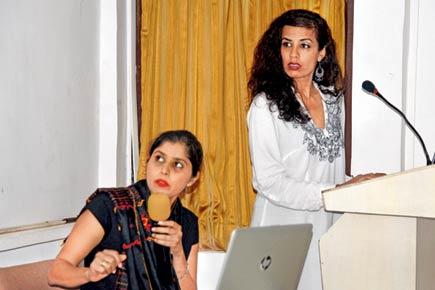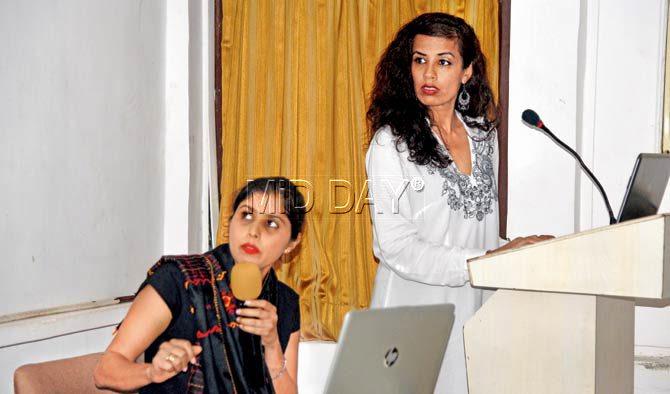Activists against Female Genital Mutilation recognise the fourth estate as a powerful ally in helping put an end to the practice

Five women from different parts of the world but bound by a common cause, to eliminate khatna or female genital cutting or mutilation, known as FGC or FGM met at SoBo’s Press Club yesterday. The women, Mumbai’s Aarefa Johri, Shaheeda Tavawalla-Kirtane, Priya Goswami from Hong Kong, Mariya Taher from New York and Insiya Dariwala from Mumbai are founders of Sahiyo, a non-profit dedicated to end the practice of Female Genital Cutting among Dawoodi Bohras and other Asian communities.

Mumbai’s Shaheeda Tavawalla-Kirtane, and Mariya Taher from New York were among the five speakers at the conference on Female Genital Mutilation yesterday at the Press Club near Azad Maidan. Pic/Suresh Karkera
ADVERTISEMENT
Sahiyo founders thought that with increasing attention on FGC or FGM in the media, the movement has actually gathered strength from media attention and reportage.
They stated that FGM falls under the umbrella of gender violence, “it is a form of violence against women,” they emphasised at the beginning of a two-hour workshop comprising short films, talks and an interaction. Their terminology itself was interesting. They repeatedly spoke about FGM ‘survivors’ just like one would talk about survivors of violence.
Insiya said that one of the reasons for Sahiyo’s genesis is the understanding that pain is universal and that, “somebody else’s pain can be as significant as our own.” She spoke about how films can be extremely powerful agents of awareness and change. The speakers concurred that it is when a film can trigger thoughts that it can be the starting point of change.
Sahiyo added that there were different types of FGM and the Type 1 FGM is most commonly practiced over here in the Bohra community. This FGM is the least extreme and comprises cutting of the clitoral hood or in some cases, the entire clitoris itself. They stressed that though it is least extreme, it is still gender violence.
They added that the medicalisation of the khatna was a growing problem. Doctors now actually did the khatna on girls, giving it a twisted kind of legitimacy. Aarefa Johri spoke about how she was cut when she was a child of seven, and years later was left with an intense and deep sense of betrayal, because it was her mother who took her for FGM. Mariya added that, “the fear of a backlash because of speaking out is very real in the community and also warned that reports should not use judgmental lingo. Words like ‘barbaric, tribal, gruesome’ are counterproductive. These tend to make the community go on the defensive and we want to engage the community in dialogue that is our aim.”
Priya stressed that visuals with reports need to be specific to reportage. For instance we see Indian reports on FGM often accompanied by visuals from Africa. As the interactive session started, one was left with a feeling that it takes tremendous courage to speak against a tradition that is so entrenched in the community, a societal norm but the effort to stamp it out, will be a slow, hard and painful one.
 Subscribe today by clicking the link and stay updated with the latest news!" Click here!
Subscribe today by clicking the link and stay updated with the latest news!" Click here!







